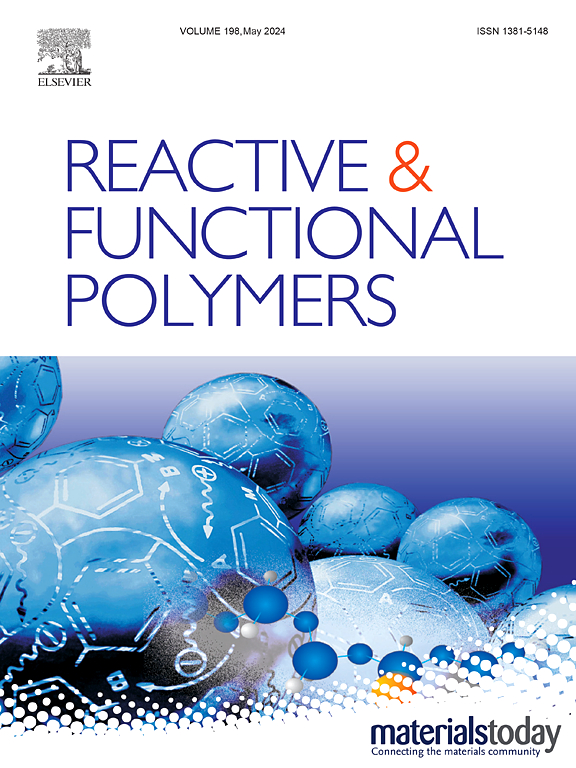Investigation of the efficacy of polyethyleneimine cross-linked non-reducing oligosaccharides in gene delivery to cancer cells
IF 5.1
3区 工程技术
Q1 CHEMISTRY, APPLIED
引用次数: 0
Abstract
For gene delivery, cationic polymers must balance two crucial parameters: transfection efficiency and cytotoxicity. Although PEI remains a widely used gene vector, its clinical translation has been hindered by significant toxicity concerns. In this study, three low-molecular-weight PEI derivatives modified with oligosaccharides, trehalose, raffinose, and stachyose, are referred to as TRON-PEI, RAON-PEI, and STON-PEI, respectively. The potential of these polymers as safe gene delivery systems was explored and the influence of oligosaccharide modifications on the transfection efficiency of PEI-based vectors was examined. The physicochemical properties of the three PEI variants, including their ability to bind pDNA, cytotoxicity, zeta potential, and complex size, were analyzed. The experimental results revealed that oligosaccharide-modified PEI polymers effectively condensed pDNA into nanoparticles with diameters ranging from 106 to 142 nm. Among these variants, RAON-PEI-3 and TRON-PEI-3 exhibited optimal performance, achieving high transfection efficiency with minimal cytotoxicity across multiple cell lines (HeLa, MHCC-97H, and HepG2). Cellular co-localization and molecular docking assays demonstrated that the three vectors could successfully bind to pDNA and that the three polymers were able to target receptor proteins (ASGP-R and galectin-2) on the membrane surface of cancer cells. In addition, the cellular co-localization assay successfully verified that RAON-PEI-3 and TRON-PEI-3 were capable of rapid lysosomal escape and mitochondrial targeting. When complexed with the p53 plasmid, these vectors successfully mediated tumor cell apoptosis, as confirmed by western blotting and live/dead assays. Our results demonstrated that oligosaccharide modification represents a promising strategy for developing PEI-based gene delivery systems with enhanced safety profiles and therapeutic potential.

聚乙烯亚胺交联非还原性低聚糖在癌细胞基因传递中的作用研究
对于基因传递,阳离子聚合物必须平衡两个关键参数:转染效率和细胞毒性。尽管PEI仍然是一种广泛使用的基因载体,但其临床转化一直受到严重毒性问题的阻碍。本研究将海藻糖、棉子糖、水苏糖三种低分子量PEI衍生物分别称为TRON-PEI、RAON-PEI和STON-PEI。研究人员探索了这些聚合物作为安全基因传递系统的潜力,并研究了低聚糖修饰对pei载体转染效率的影响。分析了三种PEI变体的物理化学性质,包括它们结合pDNA的能力、细胞毒性、zeta电位和复合物大小。实验结果表明,低聚糖修饰PEI聚合物可以有效地将pDNA凝聚成直径在106 ~ 142 nm之间的纳米颗粒。在这些变体中,RAON-PEI-3和TRON-PEI-3表现最佳,在多种细胞系(HeLa, MHCC-97H和HepG2)中实现了高转染效率和最小的细胞毒性。细胞共定位和分子对接实验表明,这三种载体都能成功结合pDNA,并且这三种聚合物都能靶向癌细胞膜表面的受体蛋白(ASGP-R和半乳糖凝集素-2)。此外,细胞共定位实验成功验证了RAON-PEI-3和TRON-PEI-3具有快速溶酶体逃逸和线粒体靶向的能力。当与p53质粒结合时,这些载体成功介导了肿瘤细胞的凋亡,经western blotting和活/死试验证实。我们的研究结果表明,低聚糖修饰是开发基于pei的基因传递系统的一种有前景的策略,具有增强的安全性和治疗潜力。
本文章由计算机程序翻译,如有差异,请以英文原文为准。
求助全文
约1分钟内获得全文
求助全文
来源期刊

Reactive & Functional Polymers
工程技术-高分子科学
CiteScore
8.90
自引率
5.90%
发文量
259
审稿时长
27 days
期刊介绍:
Reactive & Functional Polymers provides a forum to disseminate original ideas, concepts and developments in the science and technology of polymers with functional groups, which impart specific chemical reactivity or physical, chemical, structural, biological, and pharmacological functionality. The scope covers organic polymers, acting for instance as reagents, catalysts, templates, ion-exchangers, selective sorbents, chelating or antimicrobial agents, drug carriers, sensors, membranes, and hydrogels. This also includes reactive cross-linkable prepolymers and high-performance thermosetting polymers, natural or degradable polymers, conducting polymers, and porous polymers.
Original research articles must contain thorough molecular and material characterization data on synthesis of the above polymers in combination with their applications. Applications include but are not limited to catalysis, water or effluent treatment, separations and recovery, electronics and information storage, energy conversion, encapsulation, or adhesion.
 求助内容:
求助内容: 应助结果提醒方式:
应助结果提醒方式:


